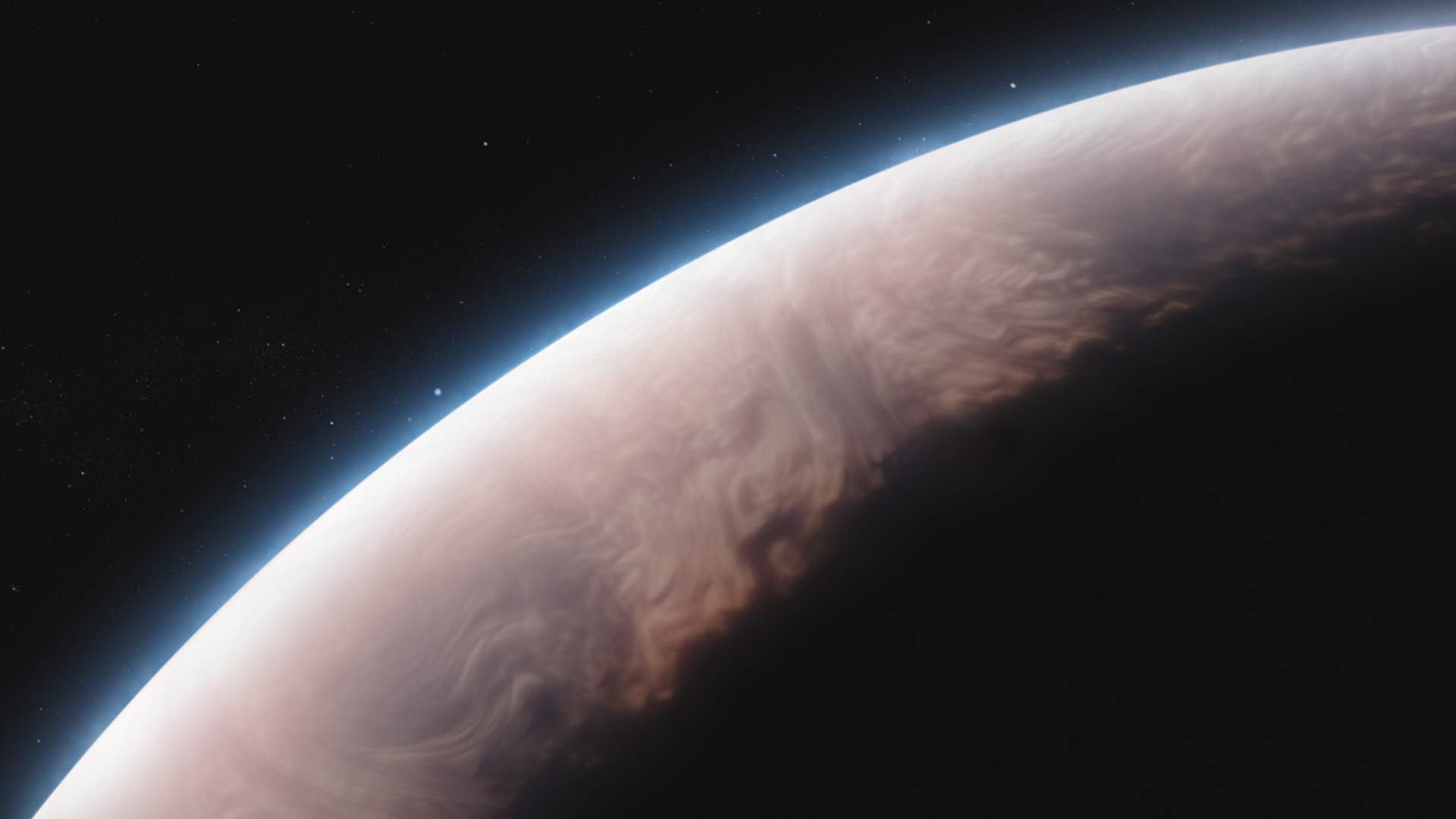James Webb telescope detects alien planet with clouds made of quartz
The exoplanet WASP-17b's atmosphere is full of quartz clouds, according to a new James Webb Space Telescope observations.

A massive, gassy planet 1,300 light-years away is so hot, its clouds are made of quartz crystals. Studying it could help scientists understand more about how clouds form in extreme alien environments.
The finding, published Oct. 16 in The Astrophysical Journal Letters, comes from an international team of researchers using the James Webb Space Telescope (JWST).
WASP-17b is a Jupiter-like exoplanet that scientists first spotted in 2009. It orbits extremely close to its star, which heats its atmosphere up to a blistering 2,700 degrees Fahrenheit (1,500 degrees Celsius). The planet itself is a bit of a lightweight; though WASP-17b's radius is about twice that of Jupiter, it has only about half Jupiter's mass. This makes WASP-17b one of the "puffiest" exoplanets discovered to date.
But astronomers recently discovered that WASP-17b's apparently fluffy clouds are hiding a secret: They're composed of tiny, solid-quartz crystals.
"We knew from Hubble observations that there must be aerosols — tiny particles making up clouds or haze — in WASP-17b's atmosphere, but we didn't expect them to be made of quartz," David Grant, an astronomer at the University of Bristol in the U.K. and first author of the study, said in a statement. "We were thrilled!"
These unexpected crystals are the first silica particles ever detected in an exoplanet's atmosphere. The researchers believe that, unlike the minuscule chips of rock that sometimes circulate in Earth's clouds, these crystals weren't swept up from WASP-17b's surface. Instead, they formed directly in its atmosphere as the result of intense heat and pressure. Based on how the crystals scatter starlight, the team estimates that each gem is about 10 nanometers across — less than one-millionth the size of an average grain of sand.
Right now, it remains unclear how pervasive these quartz clouds are across WASP-17b. The planet is tidally locked, meaning one side constantly faces its star while the other faces away. It's possible that the crystals circulate through the atmosphere on the night side, only to vaporize in the daylight.
Sign up for the Live Science daily newsletter now
Get the world’s most fascinating discoveries delivered straight to your inbox.
WASP-17b's crystalline clouds are just one example of an unusual exoplanet feature discovered using JWST; in September, the telescope made news after detecting potential signs of biological life in the atmosphere of the exoplanet K2-18 b. Soon, the telescope will turn its instruments on other weird and wonderful worlds — and scientists are waiting with bated breath to see what it spots next.

Joanna Thompson is a science journalist and runner based in New York. She holds a B.S. in Zoology and a B.A. in Creative Writing from North Carolina State University, as well as a Master's in Science Journalism from NYU's Science, Health and Environmental Reporting Program. Find more of her work in Scientific American, The Daily Beast, Atlas Obscura or Audubon Magazine.










